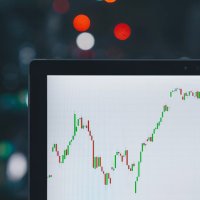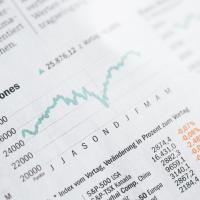Home > Investment Guide > Stock Market Investing
Scalping vs. Day Trading vs. Swing Trading: Which Short-Term Style Suits You?
When it comes to short-term trading, choosing the right strategy is paramount. Each trading style comes with its own set of rules, risk levels, and time commitments. Whether you’re drawn to the fast-paced world of scalping, the strategic moves of day trading, or the more relaxed approach of swing trading, it’s essential to understand the nuances of each style to determine which one aligns with your personality, goals, and available time.
In this article, we will break down the key features of scalping, day trading, and swing trading, helping you make an informed decision about which trading style suits you best.
What Is Scalping?
Scalping is a high-frequency trading strategy where traders aim to make numerous small profits over very short periods, typically within minutes or even seconds. The goal of a scalper is to capitalise on tiny price movements in highly liquid markets. These traders often execute dozens, if not hundreds, of trades in a single day, with each trade making only a small profit.
The essence of scalping lies in volume rather than individual trade profits. Traders who engage in scalping rely heavily on technical analysis, using sophisticated charting tools and indicators to spot minute price movements. Scalping requires rapid decision-making, precision, and a calm demeanour, as trades can come and go in a matter of seconds.
Scalpers tend to operate in very liquid markets, such as major forex pairs, stocks with high trading volumes, or highly active commodities, since they need to execute trades quickly without significant slippage. Because these trades are so short-lived, scalpers often work with advanced trading platforms that minimise latency and allow them to react instantly to market movements. Explore this website for more information.
What Is Day Trading?
Day trading is perhaps the most well-known short-term trading strategy. It involves buying and selling securities within the same trading day, with positions closed before the market closes. Day traders typically target larger price movements than scalpers, holding positions for anywhere from a few minutes to several hours, but never overnight.
This strategy is commonly used in volatile markets, where price swings throughout the day create opportunities for traders to profit. Day trading requires not only technical analysis but also a keen awareness of market news, trends, and economic events. Unlike scalping, which is highly focused on individual price movements, day traders often take a more strategic approach, looking for trends or patterns that develop over a single day.
Successful day trading requires a blend of discipline and flexibility. While a trader must adhere to specific rules to limit losses, they also need to adapt quickly to changing market conditions. This balance between strategy and quick thinking makes day trading a challenging but rewarding approach.
What Is Swing Trading?
Swing trading is a strategy that focuses on capturing price swings over days or weeks. Unlike scalpers and day traders, who focus on short-term price movements, swing traders aim to take advantage of market trends that last for several days, or even weeks. Swing trading allows for greater flexibility, as traders are not bound to make decisions in real-time and can afford to wait for a trend to fully develop.
In swing trading, technical analysis plays a significant role, with traders using indicators, chart patterns, and trend analysis to predict price direction. Fundamental analysis can also be incorporated, especially when evaluating broader market trends or economic events that could impact a security’s price over a longer period. Swing traders may hold positions overnight or over the weekend, giving them more time to analyse price action and adjust their strategy accordingly.
Swing trading is generally seen as less stressful than scalping or day trading because it involves fewer trades and more patience. This makes it appealing for traders who prefer a less time-intensive approach, as they don’t need to monitor the markets constantly. Moreover, swing traders often take fewer risks, as they’re looking to capture more significant price movements over a longer timeframe.
Key Differences Between Scalping, Day Trading, and Swing Trading
Scalping is the most time-intensive, requiring constant focus and the ability to make decisions within seconds. Because scalpers trade frequently, they are exposed to high-frequency risk, and the profits per trade are usually very small. However, by executing numerous trades, scalpers hope to accumulate consistent gains. The strategy demands a strong stomach for risk, as small losses can quickly accumulate if not managed properly.
Day trading, on the other hand, is more flexible in terms of timing, with trades lasting from minutes to several hours. While it requires less intense focus than scalping, day trading still demands significant attention to market movements. Traders may encounter higher risk due to the intraday volatility of the market, but the reward is also higher, as day traders can capitalise on larger price movements. The key challenge in day trading is balancing quick decisions with a disciplined approach to risk management.
Conclusion
Choosing between scalping, day trading, and swing trading comes down to your trading style, risk tolerance, and time commitment. Each strategy offers unique advantages and challenges, and understanding these differences is key to selecting the one that aligns with your personality and financial goals. Whether you prefer the fast pace of scalping, the strategic depth of day trading, or the relaxed nature of swing trading, the right choice for you complements your lifestyle and trading aspirations.
More to Read:
Previous Posts:




